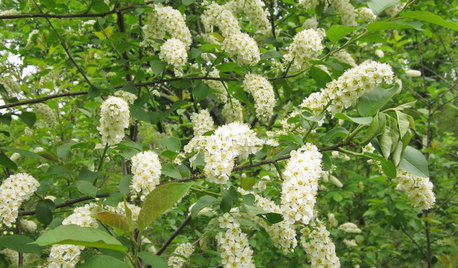Girdling of Osage Orange
indiancreeker
18 years ago
Related Stories

FALL GARDENING11 Trees for Brilliant Fall Color
Give your landscape the quintessential look of autumn with the red, orange and yellow leaves of these standouts
Full Story
EDIBLE GARDENSWhy Grow Quince? For Beauty, Fragrance and Old-Time Flavor
Delightfully perfumed fruit and lovely spring blossoms make this apple and pear cousin worth a spot in the garden
Full Story
GARDENING GUIDES8 Pickable Plants for Fall Centerpieces
Cut flowers and branches make for seasonal arrangements both easy and lovely. Grow these in the garden for the look and feel of fall
Full Story
GARDENING GUIDESGarden Myths to Debunk as You Dig This Fall and Rest Over Winter
Termites hate wood mulch, don’t amend soil for trees, avoid gravel in planters — and more nuggets of garden wisdom
Full Story
WINTER GARDENINGPruning Secrets for Exquisite Roses
Encourage gorgeous blooms year after year with this time-tested advice on how to prune your rosebush in winter for health and shape
Full Story
GARDENING GUIDESWhen and How to Plant a Tree, and Why You Should
Trees add beauty while benefiting the environment. Learn the right way to plant one
Full Story
TREESNative Plant Alternatives to Invasive Common Buckthorn
Learn how to identify and control this aggressive plant, and what to grow in its place
Full Story
GARDENING AND LANDSCAPING8 Rot-Resistant Woods for Your Outdoor Projects
No need for chemical treatments on your deck or pergola. These woods stand up to weather, insects and time beautifully on their own
Full Story
HOUZZ TOURSHouzz Tour: A Nature-Loving Compound Relaxes Into the Landscape
Local materials, native plantings and organic shapes help four structures blend beautifully with their Sierra foothills site
Full StoryMore Discussions








ahughes798
maifleur01
Related Professionals
Maple Valley Landscape Architects & Landscape Designers · Camas Landscape Architects & Landscape Designers · Finneytown Landscape Architects & Landscape Designers · Battle Ground Landscape Contractors · Edinburg Landscape Contractors · El Mirage Landscape Contractors · Fair Oaks Landscape Contractors · Harvey Landscape Contractors · National City Landscape Contractors · Ansonia Landscape Contractors · Albany Fence Contractors · North Miami Beach Fence Contractors · Independence Siding & Exteriors · Lenoir Siding & Exteriors · Worcester Siding & Exteriorsjoepyeweed
Treedoc66
indiancreekerOriginal Author
terryr
terryr
indiancreekerOriginal Author
terryr
union2045_sbcglobal_net
terryr
jeff_al
terryr
spiros
wisconsitom
kevin_texastimbers_com
cadmus
ladyslppr